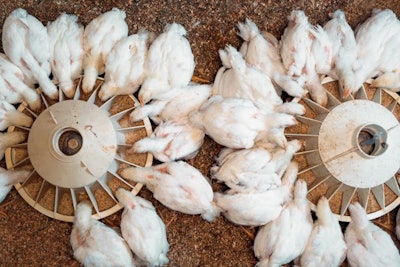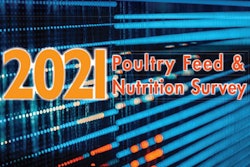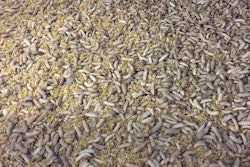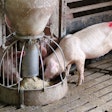
Alternatives to antibiotics gain popularity as consumer demand increases and regional regulations change
Antibiotic-free (ABF) poultry and livestock production has evolved across species and regionally throughout the past decade as new and better antibiotic alternatives gain popularity and consumer demand increases.
Today, approximately 60% of U.S. broiler production is antibiotic free, and the broiler industry has paved the way for ABF production in other species. Overall, ABF production is expected to continue to grow.
“The conversation has shifted significantly over the last 10 years — from feasibility to implementation and now the focus is better tools in the ABF toolbox,” said Marilynn Finklin, technical services manager at Kemin Animal Nutrition and Health – North America. “I’d certainly expect ABF poultry production to continue to rise moving forward, due in large part to consumer demand and regulated phase-out of some existing conventional production tools.”
There is no one alternative that can completely replace antibiotics, but combinations of several feed additives have been implemented with success in ABF production, including phytogenics, probiotics and prebiotics.
“Combinations of different products are going to be the way forward to find the best fit for different production systems, at different ages of production, in different parts of the world, for different markets,” said Mark Blakley, technical services manager at Quality Technology International.
Growth of antibiotic alternatives
Phytogenics are plant-based substances, which include herbs and spices, essential oils, polyphenols, saponins and tannins, and can provide a line of defense against disease in an animal’s digestive tract.
“Phytogenics represent a cost-effective, natural source of microbial suppression for poultry producers looking to reduce usage of antibiotics or bolster their existing ABF programs,” said Karen Pollock, technical services manager at Kemin. “However, not all phytogenics are created equal or have the same impact on animal health. It’s crucial to ensure (phytogenic feed additives) are closely monitored for quality, concentration and consistency — as no two plants or sources they are derived from are likely to be identical.”
“Natural essential oils, such as oregano oil, are becoming increasingly popular in helping to support livestock health and performance in the absence of antibiotics,” said Andrew Jackson, global commercial director at Anpario PLC.
For example, natural oregano essential oil is shown to have antibacterial, antioxidant and anti-inflammatory properties — as well as supporting immunomodulatory functions; it is also a natural flavoring compound.
Probiotics and prebiotics work together: probiotics promote healthy gut microbiota while prebiotics provide a substrate on which the beneficial bacteria can colonize and grow.
“Ensuring a well-developed gut with optimal microbial populations, known as a state of eubiosis, helps to support optimal livestock performance and enables animals to better deal with environmental challenge, reducing the need for antibiotics,” Jackson said. “It is well recognized that a healthy gut has a profound impact on regulation of metabolic and immune functions, as well as development of gut structures, such as villi for optimum nutrient absorption, thus positively influencing both animal health and performance.”
Pollock said use of probiotics and prebiotics have increased in recent years as more integrators have shifted to ABF production.
Additionally, she said, “Outside of strict ABF production, the swine industry has also benefited from probiotics and prebiotics in combination with antibiotics — so there is certainly a conventional production use and benefit as well. As research grows in this space, there is the potential to see more probiotic usage to tackle specific diseases, especially when the aim is to improve feed efficiency.”
Blakley said prebiotics may add even more benefits, such as mycotoxin mitigation.
“They also provide spaces for some bacteria and some toxins to actually attach some of your mycotoxins to the prebiotics,” he said. “And some of your bacteria, particularly Salmonella and E. coli, will attach to these prebiotics. And some of that prebiotic structure then is passed out the back end, so they don’t cause trouble in the intestine or, in the case of mycotoxins, they don’t get absorbed into the bloodstream and go to the liver and cause their damage.”
ABF production across regions, species
ABF production started in Europe, then moved to the U.S., with Latin America adopting the practice more slowly — with the exception of Brazil, which exports a lot of meat to the EU and China.
“But now, it’s expanded further than that. There are a number of countries, China, in Southeast Asia, parts of Central and South America, all those countries are now drawing a line in the sand saying, ‘At this date, we are going to ban growth-promoting antibiotics in feed.’ And some of these are banning antibiotics altogether in the feed. So, the rest of the world is coming along,” Blakley said.
In the U.S., he said, ABF production began with the broiler industry. The egg industry has embraced ABF production while the turkey industry has lagged behind for several reasons, he said.
“You keep the turkeys for so long. Keeping a heavy tom for five months is a long time for things to go wrong,” Blakley said. “And turkeys have more issues than broilers. There are more and different pathogens that affect the good health of turkey. And our choices on products available for turkeys is more limited.”
ABF production in the poultry industry has grown more quickly than in the swine and ruminant industries, due to those species’ unique challenges.
Denmark has taken the lead in ABF production in the swine industry, according to Victor Perez, technical services manager at Kemin. This has been driven by consumer demand, government regulations and economic measures.
“There has been active public engagement bringing together producers, government stakeholders and consumers from Denmark and other European countries,” he said. “The United States, of course, has regulations surrounding antibiotic usage, but the structure and sheer size of the swine herd here in the U.S. substantially differs from that of Europe – making ABF production more challenging from many perspectives.”
Because pigs of different ages live together on one farm, ABF production in pigs can have more obstacles, said Jessika van Leeuwen, global program manager, gut health at Trouw Nutrition.
“Therefore, we should focus on preventing the use of antibiotics critically important for humans, but also focus on the health of the animals,” she said. “Trying to keep those animals as healthy as possible helps prevent the need for antibiotics. But when animals are sick, they need to be treated with antibiotics that work against those diseases.”
Lessons learned in the poultry industry can be applied to other species, Finklin said.
“I’d expect a steady pickup (in the swine and ruminant industries) as consumer focus continues to trend in this direction and our alternative technologies continue to improve,” she said. “There are poultry intestinal health learnings, for instance, that can be extrapolated and further explored for cross-species application.”
Consumer demand and retail commitments drive implementation
The driving force behind ABF production in all regions is consumer demand, sources agree, but there are other factors as well.
“Increased customer awareness and the involvement of fast food chains in the U.S. is speeding up the search for alternative approaches in this region,” van Leeuwen said. “This trend is less clear in the swine sector, and we see more differences with regards to specific molecules that are prohibited in Europe, such as pharmacological levels of zinc oxide in piglets, and the use of certain antibiotics critically important to humans, according to (the World Health Organization). In (Latin America), there are specific countries that are exporting their animals or pork products to Europe or other countries, therefore they need to comply with the legislation in those countries.”
Barbara Brutsaert, global program manager, poultry gut health at Trouw, said it is important for producers to realize how strong a force consumer demand is, and they should be prepared to pivot.
“The example of the U.S. reminds us all these changes in consumer demand can happen within a couple of years,” she said. “It makes sense for producers to be prepared, whatever the situation is now. Replacing antimicrobials in a production system is possible, but it takes time and especially good preparation.”
Meanwhile, in China and the EU, public health is the primary driver behind ABF production, according to Jackson.
“China is moving very quickly, with antibiotic use having fallen by 57% in only four years between 2014 and 2018. Previously, only the Netherlands had moved at a faster rate, achieving a 56% reduction between the years 2007 and 2012,” he said. “In parts of Latin America, particularly Brazil, change is slower, but it is nonetheless happening and is driven particularly by the need to meet the demand of their export market to countries like China or regions like the EU.”
While many experts believe ABF production will continue to grow, others say there will always be room for conventional production.
“Consumer demand will continue to affect and influence many parts of the world through the retailers and restaurant chains,” Jackson said. “In some cases, it may eventually be that ABF becomes the norm, not the exception.”
While Finklin thinks ABF production will see growth over the next five years, she expects it to level off eventually.
“The percentage of ABF production will plateau, with certain operations staying with conventional practices,” she said. “Just as there will always be a place for antibiotics in livestock and poultry production as a necessary tool to improve animal health, it’s important to remember that there will always be a place for conventional production.”
She added that another important consumer demand is choice.
“Ultimately, consumers need – and demand – choice in the marketplace, and our industry has the tall task of keeping up with these needs. The important thing is that we keep moving forward to develop new solutions and technologies that improve overall animal health, efficiency and welfare,” she said.
Shifting the industry’s focus
The growth in ABF production has meant more interest in intestinal health, biosecurity and vaccinations for coccidiosis in poultry.
“The shift toward ABF has renewed the industry’s focus on intestinal health. This has led to the development of new products and technologies that benefit all producers, as well as the birds, from a health and welfare perspective,” Finklin said.
Scientists have learned that antibiotics use can disrupt the microbial balance in the intestines, van Leeuwen said.
“This can result in damage to the intestinal integrity and intestinal inflammation with detrimental effects for the nutrient absorption capacity of the intestine,” she said. “Using nutritional strategies that promote the growth of beneficial bacteria in the intestine, preventing the overgrowth of pathogens and promoting the microbial balance, results in a healthier intestine.”
Jackson said stricter biosecurity measures on farms have had a positive effect on reducing the use of antibiotics around the world.
“This has been largely driven by the impact of avian influenza, African swine fever and other viral infections which had led to accelerated development of production facilities and systems that can maintain extremely high hygiene standards and biosecurity,” he said. “A high health environment tends to reduce incidence of bacterial or viral challenge, resulting in lower levels of required antibiotic intervention.”
Restrictions on the use of ionophores in ABF production has led to more use of alternative ways to control coccidiosis in poultry.
“The use of coccidiosis vaccines, chemical anticoccidials and other promising alternatives — like phytogenics — has dramatically increased,” Finklin said.
Brutsaert agreed that there is increasing interest in vaccinating broilers against coccidiosis, and pointed to a more holistic approach to production.
“We also see producers more interested in a holistic approach to produce ABF: for example, using a broad strategy based on feed, farm and health factors,” she said.















